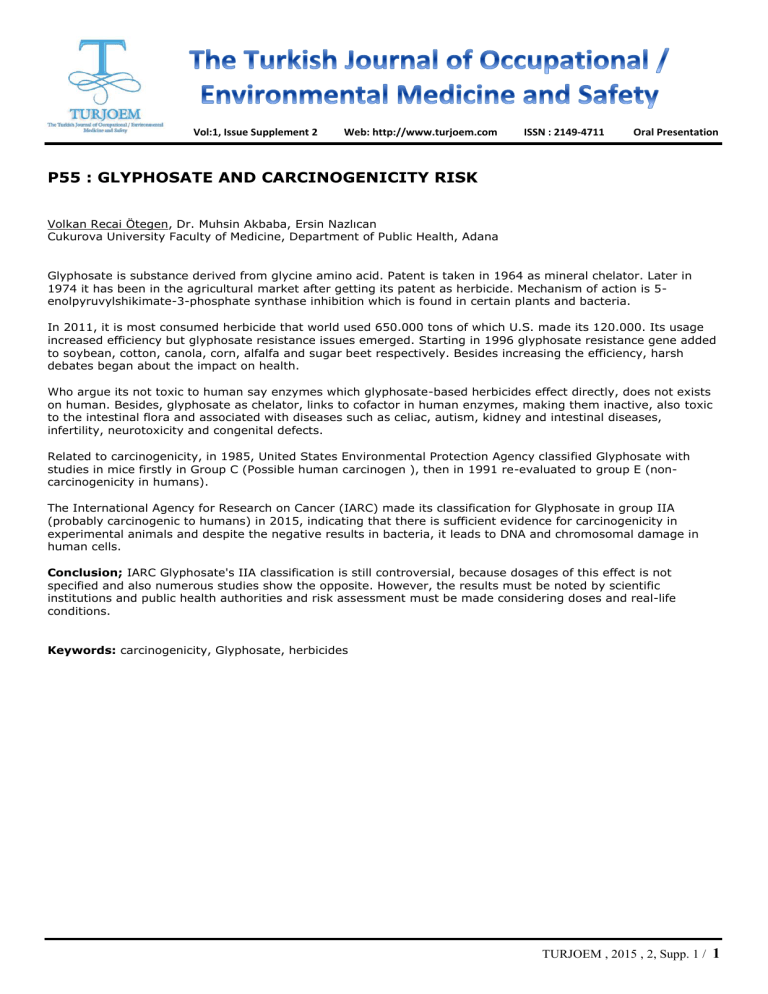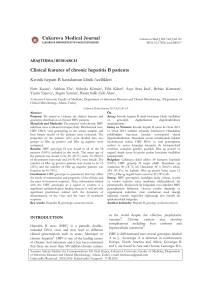
Vol:1, Issue Supplement 2
Web: http://www.turjoem.com
ISSN : 2149-4711
Oral Presentation
P55 : GLYPHOSATE AND CARCINOGENICITY RISK
Volkan Recai Ötegen, Dr. Muhsin Akbaba, Ersin Nazlıcan
Cukurova University Faculty of Medicine, Department of Public Health, Adana
Glyphosate is substance derived from glycine amino acid. Patent is taken in 1964 as mineral chelator. Later in
1974 it has been in the agricultural market after getting its patent as herbicide. Mechanism of action is 5enolpyruvylshikimate-3-phosphate synthase inhibition which is found in certain plants and bacteria.
In 2011, it is most consumed herbicide that world used 650.000 tons of which U.S. made its 120.000. Its usage
increased efficiency but glyphosate resistance issues emerged. Starting in 1996 glyphosate resistance gene added
to soybean, cotton, canola, corn, alfalfa and sugar beet respectively. Besides increasing the efficiency, harsh
debates began about the impact on health.
Who argue its not toxic to human say enzymes which glyphosate-based herbicides effect directly, does not exists
on human. Besides, glyphosate as chelator, links to cofactor in human enzymes, making them inactive, also toxic
to the intestinal flora and associated with diseases such as celiac, autism, kidney and intestinal diseases,
infertility, neurotoxicity and congenital defects.
Related to carcinogenicity, in 1985, United States Environmental Protection Agency classified Glyphosate with
studies in mice firstly in Group C (Possible human carcinogen ), then in 1991 re-evaluated to group E (noncarcinogenicity in humans).
The International Agency for Research on Cancer (IARC) made its classification for Glyphosate in group IIA
(probably carcinogenic to humans) in 2015, indicating that there is sufficient evidence for carcinogenicity in
experimental animals and despite the negative results in bacteria, it leads to DNA and chromosomal damage in
human cells.
Conclusion; IARC Glyphosate's IIA classification is still controversial, because dosages of this effect is not
specified and also numerous studies show the opposite. However, the results must be noted by scientific
institutions and public health authorities and risk assessment must be made considering doses and real-life
conditions.
Keywords: carcinogenicity, Glyphosate, herbicides
TURJOEM , 2015 , 2, Supp. 1 /
1

